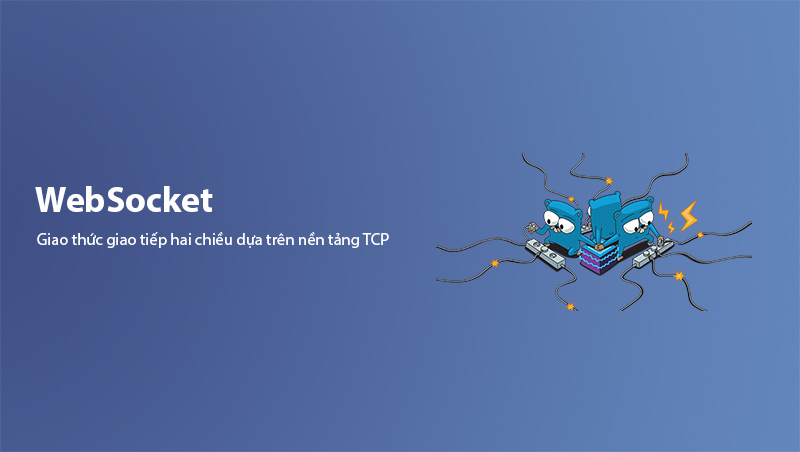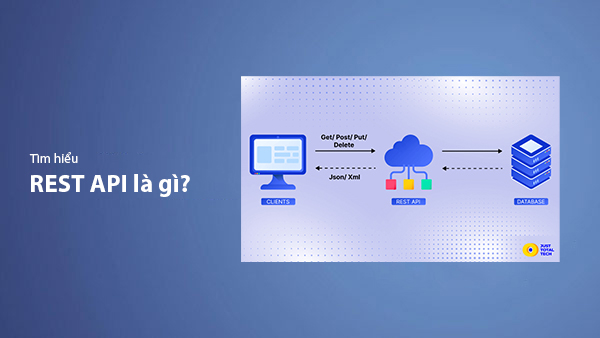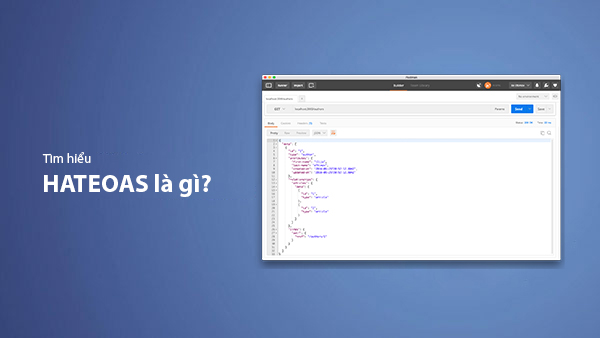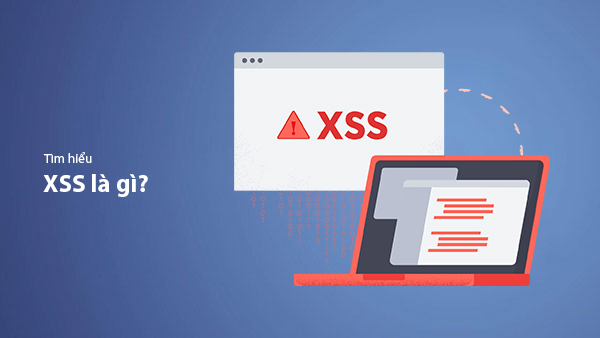What is WebSocket? The A-Z Guide to WebSocket You Need to Know
- Published on

- What is WebSocket?
- Key Features of WebSocket:
- Why WebSocket is Needed?
- Limitations of the HTTP Protocol
- How WebSocket Solves These Problems?
- Real-world Applications of WebSocket
- How WebSocket Works (Detailed)
- Establishing the Connection (Handshake)
- Full-duplex Communication
- Data Transmission Mechanism (Framing)
- Connection Closure
- Comparison with HTTP Polling
- What Are the Limitations of WebSocket?
- Compatibility
- Server Resources
- Security
- Connection Management Support
- Payload Size Limitations
- Comparison Between HTTP and WebSocket
- Connection Mechanism
- Communication Direction
- Performance
- Use Cases
- Security
- Quick Comparison Table
- What Libraries are Available for Implementing WebSocket?
- Socket.IO (JavaScript)
- WebSocket API (JavaScript)
- ws (Node.js)
- Autobahn (Python)
- Paho (Python)
- ActionCable (Ruby on Rails)
- Spring WebSocket (Java)
- Key Things to Know About WebSocket
- Creating a WebSocket Connection
- Handshake
- Handling Binary Data
- WebSocket Events
- WebSocket Methods
- Some Considerations When Setting Up WebSocket
- Supported browsers
- Health-check
- Auto-reconnect
- Group/Broadcast message
- Performance Background
- Real-World Applications of WebSocket
- Chat Applications
- Streaming and Live Video Broadcasting
- Online Gaming Applications
- Stock Trading Applications
- Internet of Things (IoT)
- Real-Time Notifications Applications
- Conclusion
What is WebSocket?
WebSocket is a full-duplex communication protocol based on TCP, designed to enable real-time communication between a client and a server through a single connection. Unlike the traditional HTTP protocol – which operates on a request-response mechanism – WebSocket allows both parties to send and receive data at any time without the need to establish a new connection.

The WebSocket protocol was first introduced as part of the HTML5 specification and quickly became the go-to solution for real-time data transmission needs in applications such as online chat, financial transactions, dashboard updates, and live streaming services.
Key Features of WebSocket:
- Two-way communication: Both the client and the server can actively send data without requiring a request.
- Continuous connection: Once established, the connection remains open until closed by either party.
- Bandwidth saving: No need to resend headers or establish a new connection like HTTP, WebSocket helps reduce latency and improve performance.
WebSocket is the ideal solution for applications that require high interactivity, where every millisecond counts in delivering information. In the next section, we will explore why WebSocket is necessary compared to traditional solutions like HTTP.
Why WebSocket is Needed?
In an era where applications increasingly require real-time interaction, the WebSocket protocol has emerged as a superior solution compared to traditional protocols like HTTP. Here are the main reasons why WebSocket is essential:
Limitations of the HTTP Protocol
The HTTP protocol operates on the traditional request-response mechanism, meaning the client must actively send a request to the server to receive data. This leads to some drawbacks:
- High latency: With HTTP, the client has to perform multiple request loops to check for updates from the server (polling), causing high latency and resource wastage.
- Bandwidth consumption: Every HTTP request must include headers, cookies, and unnecessary information, increasing the transmitted data size.
- Not suitable for real-time data: Applications like online chat, financial transactions, or gaming require instant updates, which HTTP struggles to handle efficiently.
How WebSocket Solves These Problems?
WebSocket addresses the limitations of HTTP through its continuous and bidirectional connection mechanism:
- Continuous open connection: Once established through the handshake process, the WebSocket connection remains open, eliminating the need for repeated authentication each time data is transmitted.
- Bidirectional (full-duplex): Both the server and the client can communicate simultaneously, eliminating the latency of waiting for a response.
- Resource-saving: Since only a single connection is established, WebSocket minimizes unnecessary headers and data, significantly saving bandwidth.
Real-world Applications of WebSocket
Applications requiring instant feedback are where WebSocket shines the most:
- Real-time chat: Applications like Facebook Messenger, Slack, or Telegram.
- Financial transactions: Displaying stock prices and cryptocurrency trades in real-time.
- Online gaming: Ensuring fast and continuous interaction between players.
- Live streaming: Platforms like YouTube Live or Twitch.
- Dynamic data updates: Dashboards in IoT systems or enterprise management applications.
WebSocket not only enhances user experience but also optimizes system performance. Next, we will dive into the working mechanism of WebSocket to understand how this protocol actually functions.
How WebSocket Works (Detailed)
WebSocket operates based on maintaining a full-duplex connection between the client and the server through a continuous TCP channel. Below are the detailed steps to understand the working mechanism of WebSocket:
Establishing the Connection (Handshake)
The process begins with an HTTP Upgrade request sent from the client to the server to upgrade from a regular HTTP connection to WebSocket. Specifically:
- The client sends an HTTP request with special headers to signal that it wants to switch to the WebSocket protocol. Some important headers include:
Upgrade: websocket– Indicating the client wants to upgrade the protocol.Connection: Upgrade– Specifying the connection type is an upgrade.Sec-WebSocket-Key– A base64-encoded string generated by the client used for handshake validation.Sec-WebSocket-Version– The version of the WebSocket protocol supported by the client (usually13according to the current standard).
Example client request:
GET /chat HTTP/1.1
Host: example.com
Upgrade: websocket
Connection: Upgrade
Sec-WebSocket-Key: x3JJHMbDL1EzLkh9GBhXDw==
Sec-WebSocket-Version: 13
- The server checks the request and responds with an HTTP status code 101 Switching Protocols, indicating that the protocol has been successfully upgraded. The server also returns a
Sec-WebSocket-Acceptstring, which is a hashed value of theSec-WebSocket-Keyto confirm the validity of the request.
Example server response:
HTTP/1.1 101 Switching Protocols
Upgrade: websocket
Connection: Upgrade
Sec-WebSocket-Accept: HSmrc0sMlYUkAGmm5OPpG2HaGWk=
After a successful handshake, the WebSocket connection is established.
Full-duplex Communication
Once the connection is established, WebSocket switches to a continuous open TCP channel. At this point:
- The client and server can exchange data at any time, without needing to initiate a new request as with HTTP.
- Data is packaged into frames, helping reduce complexity and save resources.
- Text frame: Used for text data.
- Binary frame: Used for binary data such as images, audio, or video.
This process doesn’t require additional metadata like HTTP headers, significantly reducing bandwidth usage and speeding up communication.
Data Transmission Mechanism (Framing)
Data in WebSocket is sent and received via WebSocket Frames. A typical frame consists of:
- FIN: Marks the frame as the last part of a message.
- Opcode: Identifies the type of frame (text, binary, or control frame).
- Payload Length: The length of the data.
- Payload Data: The actual data.
Example:
A text message "Hello" might be packaged into a text frame with corresponding FIN, opcode, and payload fields.
Connection Closure
When no longer needed, either party (the client or server) can actively close the connection by sending a CLOSE frame. The process includes:
- Sending a
CLOSEframe with a status code and a reason for closure. - The recipient of the
CLOSEframe responds with a similarCLOSEframe, and then the connection is fully closed.
This ensures the connection is terminated properly, preventing resource leaks or communication errors.
Comparison with HTTP Polling
One key point is that WebSocket outperforms HTTP Polling (continually sending HTTP requests to check for updates):
- Polling creates many unnecessary connections, wasting resources and increasing latency.
- WebSocket establishes one single connection and uses it for bidirectional data exchange, minimizing resource consumption and improving performance.
The working mechanism of WebSocket is the foundation for it becoming an ideal protocol for applications that require high interactivity and real-time data transmission. With its ability to maintain a continuous connection and reduce communication costs, WebSocket has been widely used in areas such as online chat, streaming, and IoT systems.
What Are the Limitations of WebSocket?
While WebSocket offers many superior benefits, there are still some limitations to be aware of when deploying it in real-world systems. These drawbacks primarily relate to the operating environment and how the protocol is managed:
Compatibility
- Some networks or firewalls may not support WebSocket, as this protocol often requires special ports (such as 80 or 443) or specific rule setups. This can make deployment challenging in restricted environments or businesses using proxies.
Server Resources
- Since WebSocket maintains an open connection continuously, each connection consumes a certain amount of server resources (like memory or processing threads). In high-traffic applications with millions of concurrent connections, this can put significant pressure on the server if not optimized properly.
Security
- WebSocket doesn’t provide built-in security mechanisms like HTTP (such as security headers or complex encryption). Therefore, implementation must ensure the use of the WSS (WebSocket Secure) version to protect data from eavesdropping or man-in-the-middle attacks.
Connection Management Support
- Managing WebSocket connections requires implementing additional mechanisms to handle exceptional cases, such as:
- Detecting lost connections: Due to poor network or timeouts.
- Auto-reconnect: Clients need to be programmed to reconnect automatically when a connection is lost.
- Health-check: Verifying whether the connection is still active or needs to be closed.
Payload Size Limitations
- In some cases, transmitting large data over WebSocket may encounter issues, as some servers or proxies may impose limits on payload size. This requires data to be split or additional mechanisms to handle the transmission.
Despite these limitations, they can be overcome with optimization methods and proper management. WebSocket remains the top choice for applications requiring real-time and continuous interaction. In the next section, we will compare WebSocket with HTTP to clearly highlight the differences between these two protocols.
Comparison Between HTTP and WebSocket
To better understand the benefits of WebSocket, it’s important to compare it with the HTTP protocol, which is the standard for communication on the web. Below are the key differences:
Connection Mechanism
- HTTP: A stateless protocol, each request from the client is independent and not linked to previous requests. This requires the client to establish a new connection for each request and response.
- WebSocket: A stateful protocol, the connection is maintained continuously once established, allowing both parties to communicate multiple times without reopening the connection.
Communication Direction
- HTTP: Works on a request-response mechanism, meaning the client must send a request first to receive a response from the server. The server cannot proactively send data.
- WebSocket: Supports two-way (full-duplex) communication, allowing both the client and server to send data at any time without waiting for a request.
Performance
- HTTP: Since a new connection is created for each request,
there is higher overhead, increased latency, and bandwidth usage.
- WebSocket: Maintains a persistent connection, reducing latency and saving bandwidth as there is no need to resend headers or re-establish connections.
Use Cases
- HTTP: Best suited for request-response applications such as fetching web pages, images, or non-real-time APIs.
- WebSocket: Ideal for real-time applications such as live chat, gaming, financial trading, and interactive live streaming.
Security
- HTTP: Built-in security features like SSL/TLS for encryption (HTTPS).
- WebSocket: Requires WSS (WebSocket Secure) for secure communication, which wraps WebSocket over SSL/TLS.
Quick Comparison Table
| Criteria | HTTP | WebSocket |
|---|---|---|
| Connection Type | Stateless | Stateful |
| Communication Direction | Request-response (one-way) | Full-duplex (two-way) |
| Latency | High (polling/long-polling) | Low (persistent connection) |
| Bandwidth | Consumes more | Optimized |
| Suitable Applications | Web browsing, downloading documents | Chat, streaming, IoT |
The stark differences between HTTP and WebSocket make these protocols suitable for entirely different use cases. WebSocket is the optimal choice for real-time or continuous interaction, while HTTP remains the standard for routine tasks that don't require a persistent connection. In the next section, we will explore popular libraries for implementing WebSocket effectively.
What Libraries are Available for Implementing WebSocket?
When implementing WebSocket in your application, there are many libraries available that support connecting and communicating via WebSocket, helping to reduce the effort of programming from scratch and optimizing source code. Below are some popular and powerful libraries for working with WebSocket in various contexts:
Socket.IO (JavaScript)
- Socket.IO is a popular library for developing real-time applications with WebSocket (or alternative methods like long-polling) on the Node.js platform.
- It provides an easy-to-use interface for working with WebSocket connections and includes features like automatic reconnection, broadcasting, and support for binary data.
- Strengths: High compatibility with browsers and the ability to automatically switch connection methods if WebSocket is not available.
WebSocket API (JavaScript)
- This is the native API in JavaScript that allows browsers to connect to WebSocket servers without the need for external libraries.
- It provides a simple interface for creating connections, sending, and receiving data over WebSocket.
- Strengths: Easy to use, no additional libraries required, and ideal for lightweight or small web applications.
const socket = new WebSocket('wss://example.com/socket');
socket.onopen = function (event) {
console.log('WebSocket connection opened');
socket.send('Hello, Server!');
};
socket.onmessage = function (event) {
console.log('Data from server: ', event.data);
};
socket.onclose = function (event) {
console.log('WebSocket connection closed');
};
ws (Node.js)
- ws is a simple and fast WebSocket library for Node.js. It supports both WebSocket client and server and can be easily integrated into server-side applications.
- Strengths: Efficient WebSocket connection management, high performance, and easy integration into large applications requiring concurrent connection handling.
const WebSocket = require('ws');
const wss = new WebSocket.Server({ port: 8080 });
wss.on('connection', (ws) => {
ws.on('message', (message) => {
console.log('Received message: ', message);
});
ws.send('Welcome to WebSocket server!');
});
Autobahn (Python)
- Autobahn is a powerful WebSocket library for Python that supports both client and server applications. It adheres to the RFC 6455 standard and supports WAMP (Web Application Messaging Protocol).
- Strengths: Integrates features like RPC (Remote Procedure Call), pub/sub messaging, and supports TLS for secure connections.
Paho (Python)
- Paho is another popular WebSocket library for Python, primarily used for MQTT (Message Queuing Telemetry Transport) but also supports WebSocket. It is ideal for IoT applications where communication between devices and servers via WebSocket is required.
- Strengths: Easy to use for IoT applications and provides powerful features like Quality of Service (QoS).
ActionCable (Ruby on Rails)
- ActionCable is an extension of Ruby on Rails that allows easy WebSocket integration in Ruby applications.
- Strengths: A built-in solution in Rails, supporting real-time communication without the need for separate setup.
Spring WebSocket (Java)
- Spring WebSocket is part of the Spring Framework, facilitating WebSocket integration in Java applications.
- Strengths: Seamlessly integrates with Spring and supports features like STOMP for messaging and SockJS for fallback options.
With powerful libraries like Socket.IO, ws, Paho, and many others, implementing WebSocket becomes easier and more efficient than ever. Depending on your platform and application requirements, you can choose the appropriate library to optimize your real-time communication experience. In the next section, we will delve into how to create a basic WebSocket connection and the next steps in the implementation process.
Key Things to Know About WebSocket
When implementing WebSocket in web applications or real-time systems, there are some key factors and techniques that you need to understand to make the most out of this protocol. Below are the important points every developer should be aware of when working with WebSocket.
Creating a WebSocket Connection
To begin communication over WebSocket, you need to establish a connection between the client and server.
- The client usually establishes the connection using the WebSocket API in JavaScript or a similar library. The connection is made using the following syntax in JavaScript:
const socket = new WebSocket('wss://example.com/socket');
- After the connection is established, the client can send and receive data over the open WebSocket connection. Specifically:
// Send data
socket.send('Hello, Server!');
// Receive data from the server
socket.onmessage = function (event) {
console.log('Data from server:', event.data);
};
- The server (server-side) will accept the WebSocket request from the client and maintain the connection. You can use libraries like ws (Node.js) or Spring WebSocket (Java) to set up the WebSocket server.
Handshake
The WebSocket connection setup begins with a handshake. This is the stage where the client sends an HTTP request to upgrade the connection from HTTP to WebSocket, as discussed earlier. Once the server confirms the request, the WebSocket connection is established.
- In the handshake, the client will send an HTTP GET request with special headers:
Upgrade: websocketSec-WebSocket-Key: <key>Sec-WebSocket-Version: 13
- The server will then return an HTTP 101 Switching Protocols response, allowing communication over WebSocket.
Handling Binary Data
WebSocket not only supports text data but also allows for the transmission of binary data (such as images or videos). This makes WebSocket an ideal choice for applications like video streaming or sending files in chat applications.
- WebSocket supports two types of binary data:
- Blob: Used for handling large files or objects.
- ArrayBuffer: Typically used for transmitting smaller binary data, like the bytes of a file.
How to send binary data:
const socket = new WebSocket('wss://example.com/socket');
// Send ArrayBuffer
const buffer = new ArrayBuffer(16);
socket.send(buffer);
// Send Blob
const blob = new Blob(['Hello, world!'], { type: 'text/plain' });
socket.send(blob);
WebSocket Events
WebSocket provides several events to help you monitor and handle various situations during the connection lifecycle:
onopen: Triggered when the WebSocket connection is successfully opened.onmessage: Triggered when the client receives data from the server.onclose: Triggered when the WebSocket connection is closed.onerror: Triggered when an error occurs during the connection or data transmission.
socket.onopen = function (event) {
console.log('WebSocket connection opened.');
};
socket.onmessage = function (event) {
console.log('Data from server: ', event.data);
};
socket.onclose = function (event) {
console.log('WebSocket connection closed.');
};
socket.onerror = function (event) {
console.log('WebSocket error: ', event);
};
WebSocket Methods
WebSocket provides the following methods for efficient communication:
send(): Used to send data over the WebSocket connection.close(): Used to close the WebSocket connection when no longer needed.
Example:
// Send data
socket.send('Hello, Server!');
// Close connection
socket.close();
WebSocket Object Properties
The WebSocket object provides several properties to help you check the status and control the connection:
-
readyState: The status of the WebSocket connection. It can have the following values:0(CONNECTING): Connection is not yet open.1(OPEN): Connection is open and communication is possible.2(CLOSING): Connection is closing.3(CLOSED): Connection is closed.
-
url: The URL of the WebSocket server to which the connection is being established.
Example to check the status:
if (socket.readyState === WebSocket.OPEN) {
console.log('Connection is open, ready to send data.');
}
WebSocket provides a powerful and efficient way to communicate in real-time within modern web applications. Understanding concepts like handshake, events, methods, and binary data will help you easily implement WebSocket and optimize your application's performance. In the next section, we will explore important considerations when setting up and deploying WebSocket in practice.
Some Considerations When Setting Up WebSocket
Although WebSocket offers many benefits when deploying real-time applications, setting up and maintaining an effective WebSocket connection also requires certain considerations and special techniques. Below are some important factors you need to consider when working with WebSocket in a real-world environment.
Supported browsers
Not all browsers support WebSocket. Most modern browsers such as Chrome, Firefox, Safari, and Edge support WebSocket. However, some older browsers or mobile versions may not support it or encounter issues when using WebSocket.
- Check compatibility: Before deploying WebSocket, you need to identify and check whether your target devices support WebSocket. You can use the following code snippet to check for support:
if ('WebSocket' in window) {
console.log('WebSocket is supported!');
} else {
console.log('WebSocket is not supported.');
}
If WebSocket is not supported, you can use polyfill libraries like SockJS as an alternative.
Health-check
A common issue with WebSocket applications is the loss of connection between the client and the server due to network disruptions or server failures. To address this, you should implement health-checks to ensure the WebSocket connection remains stable.
- Health-check is a mechanism for checking the status of the WebSocket connection, helping you detect inactive connections and automatically reconnect if necessary.
- You can implement a ping-pong or send heartbeat messages periodically to check the connection status.
For example, sending a ping message periodically from the client to the server:
setInterval(() => {
if (socket.readyState === WebSocket.OPEN) {
socket.send('ping');
}
}, 30000); // Send ping every 30 seconds
Auto-reconnect
An important feature when working with WebSocket is auto-reconnect capability. When the WebSocket connection is lost due to a network issue or server failure, setting up automatic reconnection helps the application maintain its real-time state without manual intervention.
- The auto-reconnect feature can be easily implemented by checking the connection status and reconnecting if the connection is closed.
For example, automatically reconnecting after a connection is lost:
socket.onclose = function (event) {
console.log('WebSocket connection closed, attempting to reconnect...');
setTimeout(() => {
socket = new WebSocket('wss://example.com/socket');
}, 5000); // Try reconnecting after 5 seconds
};
Group/Broadcast message
One of the powerful uses of WebSocket is the ability to send group messages or broadcasts to multiple users simultaneously. To achieve this, you can use WebSocket libraries that support multicasting or broadcasting.
- Multicasting allows sending a message to a specific group of users, while broadcasting sends a message to all the current WebSocket server connections.
Example of broadcasting a message to all connections:
wss.on('connection', (ws) => {
ws.on('message', (message) => {
wss.clients.forEach((client) => {
if (client !== ws && client.readyState === WebSocket.OPEN) {
client.send(message); // Broadcast the message to all clients
}
});
});
});
Performance Background
When deploying WebSocket in large-scale applications, performance is a critical factor to consider. Here are some tips to optimize performance when using WebSocket:
- Use compression: Transmitting binary data over WebSocket can consume bandwidth if not compressed. Use compression methods like gzip or deflate to reduce the data size.
- Resource management: Each WebSocket connection consumes system resources (memory, CPU, bandwidth). Ensure the server can handle thousands of WebSocket connections without overload. Load balancing and sharding may be necessary solutions to distribute the load.
- Connection management: Ensure your application does not create too many WebSocket connections simultaneously, as this could overload the server. Use techniques like connection pooling for efficient connection management.
When deploying WebSocket, paying attention to factors like browser compatibility, connection health-checks, auto-reconnect, broadcasting messages, and performance optimization will help you build a robust and stable WebSocket system. In the next section, we will explore real-world applications of WebSocket and how it is used across different fields.
Real-World Applications of WebSocket
WebSocket is not just a theoretical technology but has been widely applied in many fields and real-world applications, particularly in environments requiring real-time communication. Below are some typical applications of WebSocket in various industries and fields:
Chat Applications
One of the most popular applications of WebSocket is in chat applications. WebSocket allows users to send and receive messages in real-time without the need to refresh the page or send a new HTTP request for each message. Thanks to WebSocket's full-duplex feature, both the sender and the receiver can communicate continuously without delay.
- Example: Applications like Slack, Facebook Messenger, or WhatsApp Web use WebSocket to provide smooth chat experiences, allowing users to chat immediately when new messages arrive.
Streaming and Live Video Broadcasting
WebSocket is also an ideal technology for building live video streaming or real-time data streaming applications. Due to its ability to transmit data quickly and without interruption, WebSocket helps deliver a smooth experience in applications such as video streaming, screen sharing, or video conferencing.
- Example: Platforms like YouTube Live, Twitch, or online conferencing services like Zoom use WebSocket to transmit video and audio in real-time without significant delays.
Online Gaming Applications
WebSocket is widely used in online gaming to allow players to communicate with each other in real-time. Multiplayer games like chess, racing, or strategy games need to continuously and synchronously update the game state for all players.
- Example: Games like Agar.io, World of Warcraft, and other online games use WebSocket to synchronize the game state between servers and players in real-time.
Stock Trading Applications
WebSocket is essential in stock trading and financial applications. Investors need to receive real-time updates on stock prices, shares, or cryptocurrency prices to make quick trading decisions. WebSocket provides the ability to transmit market data and trades instantly without delay.
- Example: Stock trading platforms like Robinhood, Coinbase use WebSocket to provide real-time information and updates on stock and cryptocurrency prices.
Internet of Things (IoT)
In Internet of Things (IoT), WebSocket is very useful when devices need to communicate with each other or with a server in real-time. WebSocket allows sensors, smart devices, and mobile applications to synchronize data and state quickly without the need for multiple HTTP requests.
- Example: In smart home systems, WebSocket helps connect devices like air conditioners, lights, and automatic doors with mobile apps or servers to receive and send control commands.
Real-Time Notifications Applications
WebSocket provides the perfect way to send notifications in web or mobile applications when new events occur. Applications using WebSocket can send instant notifications to users without requiring them to refresh the page or receive delayed notifications through other methods.
- Example: Applications like Trello, Google Docs, and GitHub use WebSocket to notify users when changes are made to tasks, documents, or code repositories.
WebSocket is a powerful and flexible technology that enables applications to build seamless and efficient real-time experiences. From online chat, live streaming, to financial applications and Internet of Things (IoT), WebSocket has proven its importance in various fields. Understanding the real-world applications and features of WebSocket will help developers optimize and implement effective solutions in their projects.
Conclusion
WebSocket is an extremely powerful technology that enables real-time communication between clients and servers, offering many advantages over traditional protocols like HTTP. With its ability to transmit data in a full-duplex manner and not requiring a new connection for every request, WebSocket is suitable for many types of applications that require low latency and high continuity.
Through the previous sections, we have explored in detail the working mechanism of WebSocket, considerations when setting it up, along with its real-world applications in fields such as online gaming, chat applications, live video streaming, stock trading, and IoT. This information will help you understand the important factors when deploying WebSocket in your projects.
Whether you are developing a chat application, a streaming platform, or an IoT system, WebSocket can provide the perfect solution for real-time communication. However, as mentioned, maintaining performance and ensuring a stable connection are key factors to consider during development.
We hope that this article has provided you with a comprehensive and in-depth understanding of WebSocket and that you can apply this technology in your projects effectively and optimally.
Latest Posts

Lesson 26. How to Use break, continue, and return in Java | Learn Java Basics
A guide on how to use break, continue, and return statements in Java to control loops and program execution flow effectively.

Lesson 25. The do-while Loop in Java | Learn Basic Java
A detailed guide on the do-while loop in Java, including syntax, usage, examples, and comparison with the while loop.

Lesson 24. How to Convert Decimal to Binary in Java | Learn Basic Java
A guide on how to convert numbers from the decimal system to the binary system in Java using different methods, with illustrative examples.

Lesson 23. How to Use the While Loop in Java | Learn Java Basics
Learn how to use the while loop in Java with syntax, real-world examples, and practical applications in Java programming.
Related Posts

What is REST API? Complete A-Z Knowledge About REST API
REST API is one of the essential concepts that every backend developer needs to fully understand. This article provides comprehensive knowledge about REST API, including its definition, principles of operation, and how to build a standard RESTful API.

What is HATEOAS? How to Build APIs Using HATEOAS
Learn about HATEOAS, an important concept in API development, and how to build APIs using HATEOAS to improve interactivity and scalability.

What Is GraphQL? The Advantages of GraphQL Over REST API
Explore GraphQL, a modern API technology, and why it outperforms REST API in many web development scenarios.

What is XSS? Signs of Detection and Effective Prevention Methods
Learn about XSS, signs of detection, and effective prevention methods for XSS attacks in websites.

